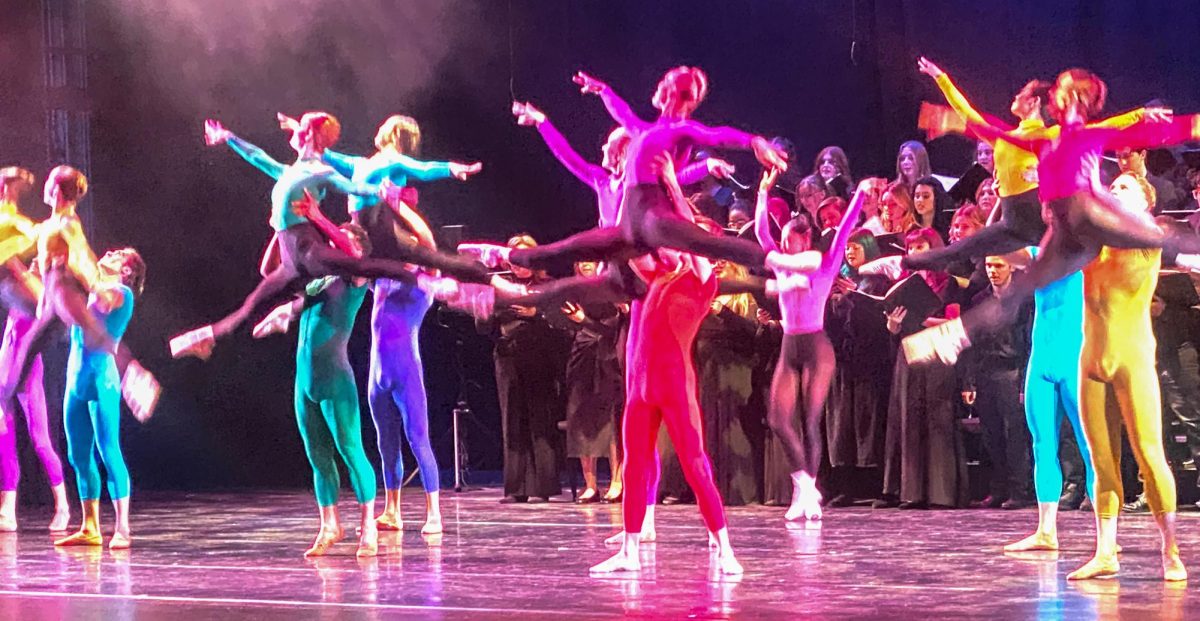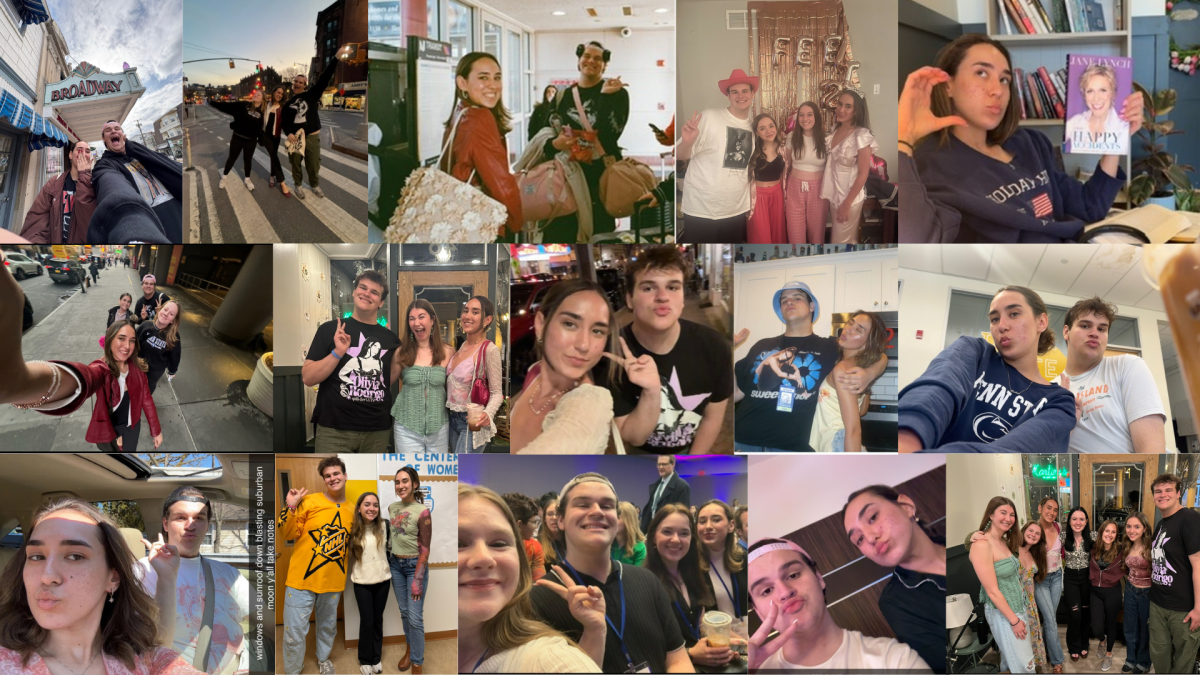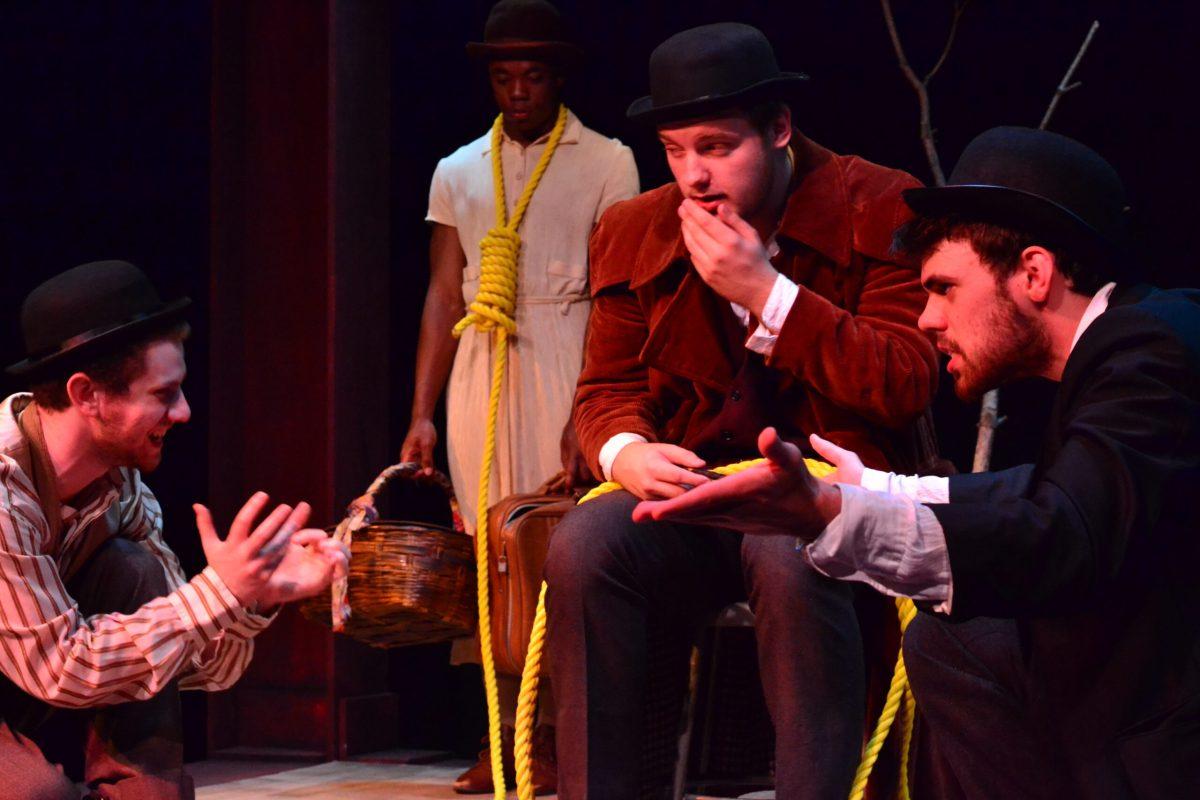The cyclical nature of time. The meaninglessness of humans’ daily existence. The inability to clearly recall one’s past.
These are just of few of the themes expressed in Samuel Beckett’s “Waiting for Godot”… maybe.
The play, performed by Rowan’s Lab Theatre this past weekend, is infamous for its ambiguous meaning and nontraditional structure, which helped initiate the Theatre of the Absurd.
Directed by Rowan senior Courtney Bundens, the production remained faithful to Beckett’s original work, while still allowing for the creative team’s own interpretation of the open-ended story.
The cast consisted of John Hager as Vladimir, Sam Tracton as Estragon, Matthew Zupancic as Pozzo and Kate Wilburn as Lucky/Boy.
The Lab Theatre, housed in Bunce’s basement, provided an intimate setting for the small-scale play, which consists of four actors and five characters. This space allowed for the physicality of the performers to be put on full display.
These physical aspects of the performances ranged from Wilburn’s backward leg extension to a humorous scene involving Tracton and Hager passing hats back and forth and using them as interactive props in an absurd choreographed routine.

While the performers precisely executed physical comedy, the major focus of the play was their intricate dialogue. It was in the many conversations between characters that the audience learned of the titular Godot, the never-seen persona that Tracton’s Estragon and Hager’s Vladimir perpetually wait for. The two actors did an excellent job portraying the anticipation felt by their characters, a feeling that also seeped into the audience as they watched the pair deliver philosophical dialogue in the context of a near impenetrable plot.
Zupancic’s performance as Pozzo was a major highlight of the show. His intimidating height and frame lent well to the booming and dominant character he portrayed.
However, Zupancic also conveyed the vulnerability of the character, alternating between abrasive banter with Vladimir and Estragon and rare moments of tenderness for his slave, Lucky, who he walked on a leash. The second act of the play saw Pozzo and Lucky stricken blind, with the former dependent on the leash and his slave to lead him around. Again, Zupacnic expertly balanced the dominant exterior of his character with an inner insecurity, shown powerfully through his blindness and newfound dependence on his slave.

A pair of great performances came from Wilburn, who played both Lucky and the Boy. As Lucky, Wilburn embodied a demure and submissive character. Lucky, a slave to Pozzo, was walked around on a leash and forced to carry his bags and stool. In this role, Wilburn had only one set of lines, a rambling yet complex monologue that exemplified the innate instability and potential depth of thought of her otherwise mute character. Aside from these lines, Wilburn relied on the nuances of body language for a powerful performance. For most of her stage time, Wilburn stared at the ground in wait of orders from Pozzo. Although usually in the background, Wilburn remained a magnetic presence with her subtle portrayal of a hurt soul full of emotions waiting to pour forth.
In any fictional narrative that relies heavily on absurdity, it can prove difficult to avoid over-the-top antics or a lack of emotion and meaning. However, the actors and actress in this production lent believability to this absurd universe with their deft balancing of physical comedy and the intensely delivered philosophical ruminations innate in Beckett’s work.
The set design, lighting and sound also helped greatly to create an immersive theater-going experience. The minimal set featured a raised platform with a single tree in the center. A soft light highlighted the warm tones of the characters’ clothing, mostly grays and browns, while another purple light emanated from underneath the stage. This secondary light gave the setting an otherworldly quality. Additionally, a softly blowing wind sound was played continuously, making the setting feel like an open, desolate wasteland.
Samuel Beckett’s “Waiting for Godot” is an absurdist, existential masterpiece. Amidst this ambiguity, Bundens and her crew were able to provide their own impressive interpretation of the classic play, resulting in a moving and chilling production replete with memorable performances.
For questions/comments about this story, email [email protected], or tweet @TheWhitOnline.
































































































































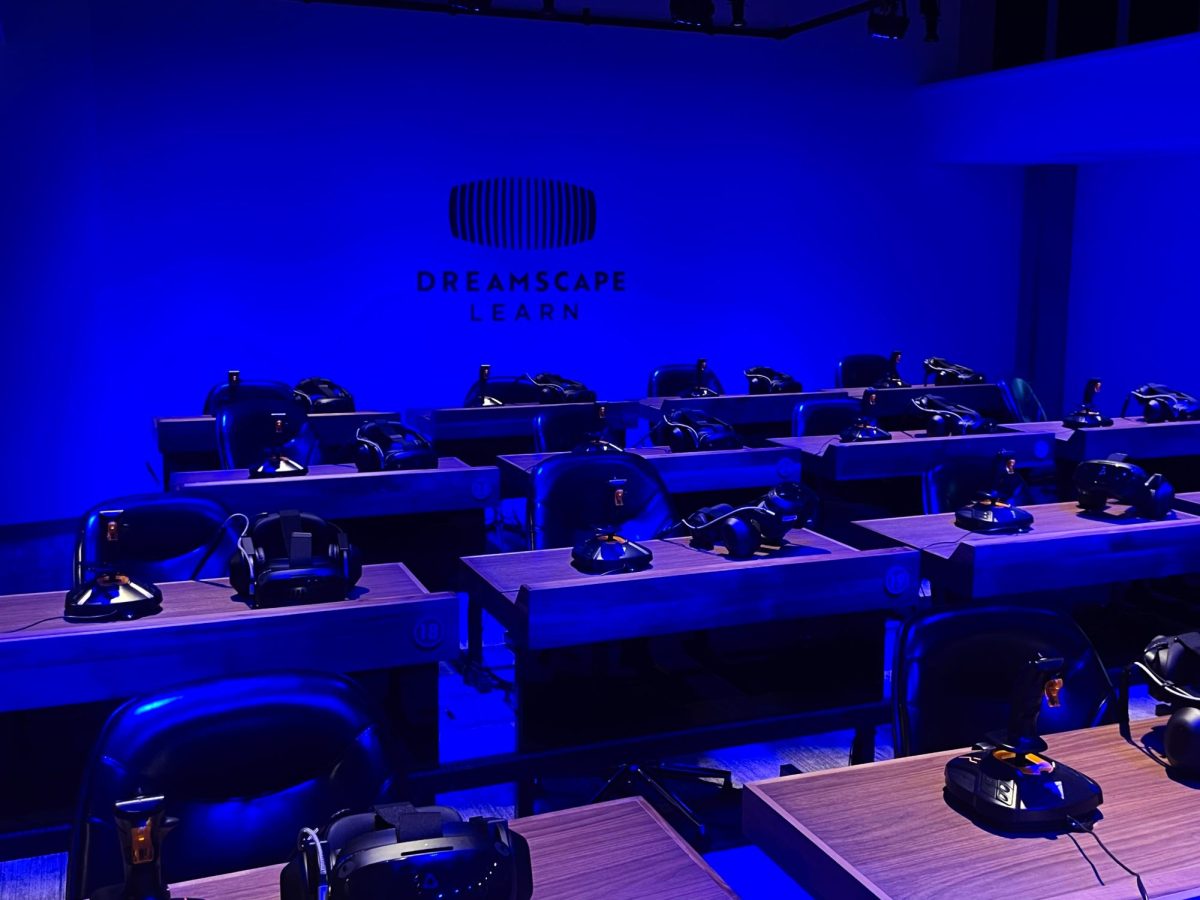
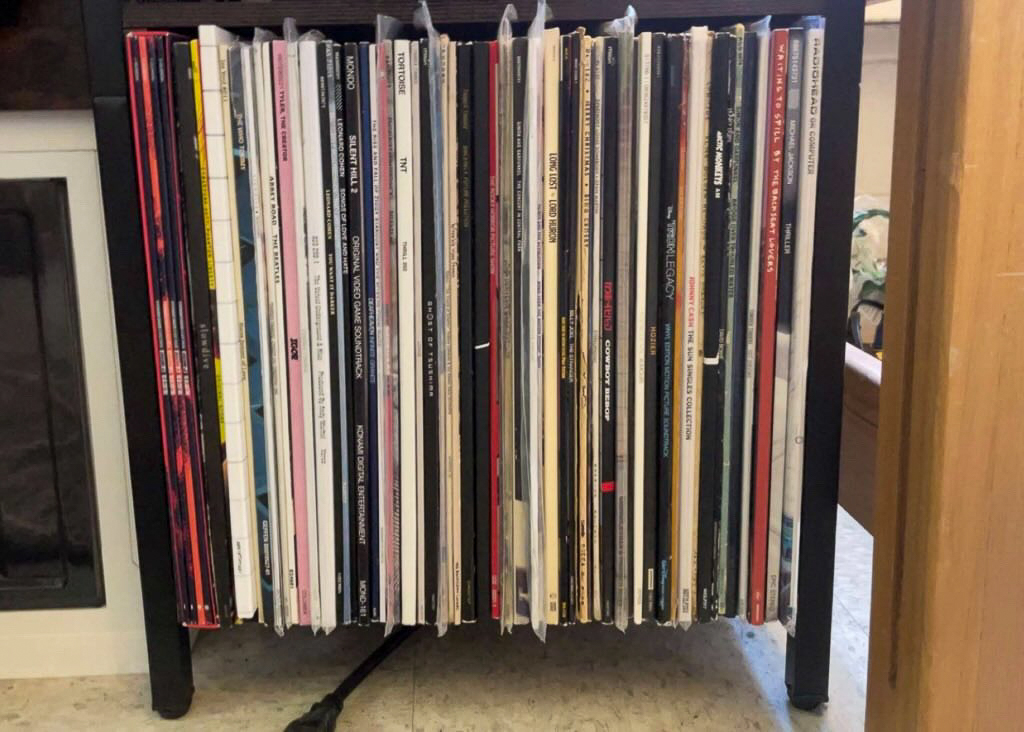























!["Working with [Dr. Lynch] is always a learning experience for me. She is a treasure,” said Thomas. - Staff Writer / Kacie Scibilia](https://thewhitonline.com/wp-content/uploads/2025/04/choir-1-1200x694.jpg)

